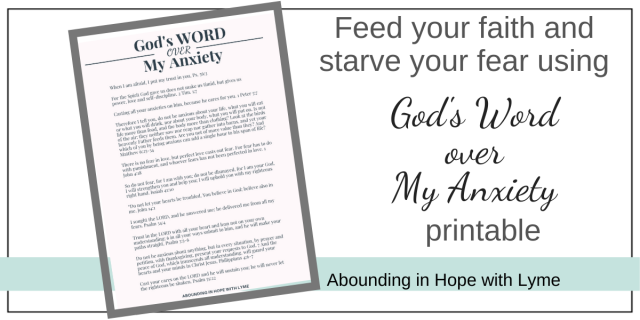Since recently sharing our story with anxiety, I’ve been meeting moms who also have a child with anxiety. I’ve read research stating that there is a rise in anxiety in our children across the nation.
Because my child suffered from severe anxiety and OCD I know the deep down frustration that a mom can feel when your child has a panic attack and you have no earthly idea what’s going on or what to do.
If you haven’t read my first post in this series check out how to recognize anxiety in your child.
When your child becomes completely irrational it’s impossible to get their attention, impossible to discuss anything with them and logic doesn’t work. You could feel at a total loss and could even begin to have your own anxiety attack grasping for some way to just get them to stop.
We tried many different things to help our daughter with her anxiety, often to no avail. We did eventually find tools that we could use to bring some sort of calm to our daughter and our home.
First of all, you need to know and really understand that your child’s anxiety is not their fault. They can’t just stop, they can’t pray it away, they can’t change their thinking especially when they’re right smack in the middle of it.
The Physiology of Anxiety
When your child is having an anxiety attack they are having a very real physiological reaction. Chemical messengers, known as neurotransmitters send signals to different parts of the brain that influences the processes in the body. Once this happens there is an activation of the sympathetic nervous system which is responsible for the fight or flight response. Adrenaline is then released into their system causing a state of panic, dizziness, increased heart rate and shortness of breath.
When you begin to understand what’s going on physiologically, it becomes easier to handle the situation appropriately but you’ll need tools and you’ll need to practice when everyone is calm.
Practical Application
As the caregiver, you’ll need to take a deep breath and calm yourself down. Step back or step out of the area if you can. Your child may not want you to leave and if that’s the case either sit or stand quietly near them and calmly take in a few deep breaths.
While you’re slowly breathing, you’re calming yourself down so that you can think clearly. At this time, you’re going to assess what’s going on and if you know what has triggered their anxiety you can begin to help them work through it.
The next thing you’ll want to do is to calmly and softly speak to them. Some children do well if you hug them and others just want you nearby. Ask your child what it is they need or what is causing them to be afraid.
He may not know and that’s OK, just tell him you’ll figure it out together. You have to figure out what works best for your individual child and the best time to figure that out is when you’re just hanging out together and he’s not anxious.
Don’t take anything your child says or does personally. Remember, your child is afraid, probably terrified. He doesn’t want to behave negatively but he also doesn’t know how to control himself at this point.
HELPFUL ACTIONS
Things that can be helpful to an anxious child are for you to sit nearby, softly touching them, holding their hand, embracing them in a tight hug, speaking words of truth over them in a very soft voice, praying out loud for them, or just sitting quietly with them so that they know you’re there. It’s really important to ask your child what would help them but ask them when they’re not having anxiety.
COPING SKILLS
It is really helpful to write down a list of coping skills that can be implemented during an anxiety attack such as deep breathing, escaping by listening to music or watching TV. Have them talk back to the thoughts that are making them anxious. They can read scriptures or statements that are true, for example; “I’m ok, this is just a feeling and it will pass”. Holding a stress ball or talking it out are other coping skills that can be very helpful.
Keep this list handy so that you can ask which coping skill they’d like to practice. If your child doesn’t want to cooperate begin deep breathing exercises and ask him to do it with you. You can then try to gently and calmly lead them into one of these skills to see if it’s helpful.
SUPPLEMENTS
Sometimes a supplement like GABA or l-Theanine can help to calm your child just enough to where he will be able to practice his coping skills. Using Lavender, Stress Away or Peace and Calming essential oils from Young Living can be very helpful as well.
OUTSIDE HELP
If your child’s anxiety is too much for you and you aren’t able to work through it with him, please seek out the help of a therapist who can teach you both Cognitive Behavioral Therapy (CBT). This was one of the best things we did for our daughter.
WHAT NOT TO DO
You never want to tell your anxious child to stop being anxious. Don’t force them to cooperate and never call them names or make fun of them. Remember that you’re the child cannot control their anxiety nor can they control their actions at the time unless they’ve been given the tools and the practice they need.
Next time, I’ll be discussing how infections, food, and the environment could be the cause of your child’s anxiety. In the meantime, go hug your anxious child.




Leave a Reply